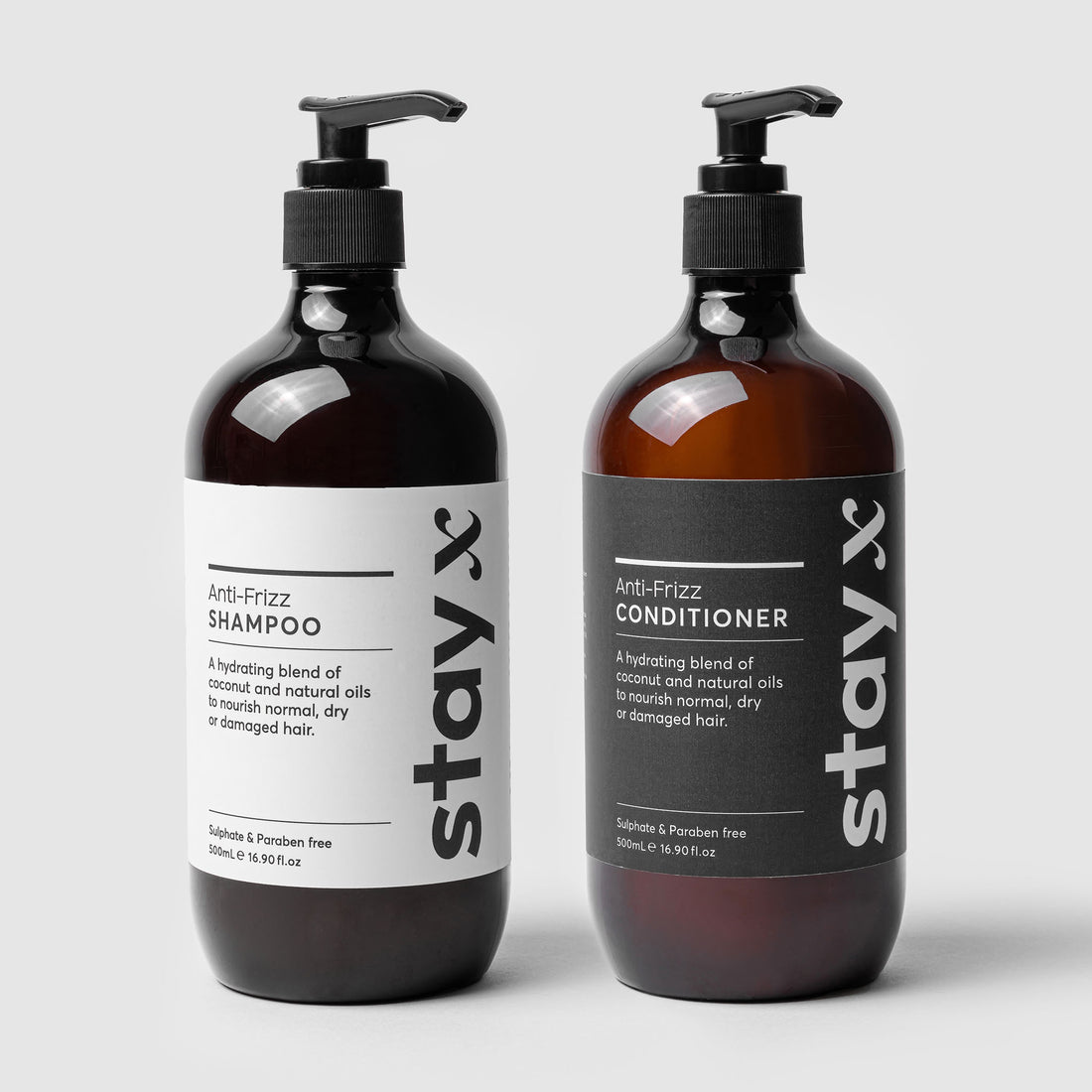We’re not going to sugar coat it: Once your ends split, you can’t reverse the damage! It’s the same deal with your nails—if they crack, no amount of cuticle oil will magically mend them back. But before you reach for the scissors, and kiss your hard-earned length goodbye, let’s consider the alternatives. Here are some clever ways to disguise signs of hair breakage.
1. It’s static mayhem
Alas, your hair is floating! That’s your first sign of hair breakage. You know something’s up when no matter how much hairspray you use, your locks are still airborne. So what’s the deal?
The problem comes down to static electricity (don’t worry, we’ll keep it straightforward). Basically, when hair is damaged, it attracts more electrons (negative energy)—whereas healthy hair, which is more hydrated, attracts protons (positive energy). What’s happening is your damaged strands are repelling the healthy ones. That's how you get static flyaways.
To tame the problem, try gliding a dryer sheet along your roots to neutralize the static.
2. The ends feel crispy
Not all breakage is visible. So when in doubt, touch your ends—if they feel crispy, that’s a key sign of breakage. The texture will be like the rough side of a scrubbing sponge.
Massage some natural oil like Argan into the ends to restore moisture and smoothness. However, if the damage is extreme, your hair needs a more urgent solution: protein repair. Consider using a keratin-infused shampoo to reinforce the outer layer of the hair shaft. The keratin will fill in the cracks along the strand’s cuticle, creating a surface that is smoother and shinier.
3. The texture is heavier
Here's a neat fact: Dead hair weighs more than healthy hair. The difference has to do with the way your strands absorb humidity from the atmosphere.
Healthy hair doesn’t soak up excess water because its cuticle layers are tightly closed—a condition that keeps the strands flexible, bouncy and lightweight. With damaged strands, on the other hand, the cuticle layers are open, kind of like scales, which attract more humidity. So yes, in essence, your hair can get “bloated”! And depending on the level of breakage, your hair will get frizzy and bulky.
4. You have split ends
Split ends are a tell-tale sign of hair breakage. It happens when the strands can’t hold enough sebum (moisture), causing the ends to fray apart. Like a burnt tree branch, once the shaft gets too dry, it’ll fracture in multiple spots and snap off.
If you were to inspect the damage under a microscope, you’d see shreds of hair layers splitting into all directions. So, to help seal the strands and restore smoothness, you can try a taming tool like the Stay X Hair Perfecting Wand. It conditions your strands with a lightweight, anti-humidity coating, keeping every strand in place with a silky finish!
5. It looks lifeless
Last quality check: How’s your natural shine? If your hair is dull, limp or just “meh-looking”, it’s a likely sign of hair breakage.
The reason comes down to optics (time for physics…). Okay here we go: When the hair cuticle is raised, light can’t bounce off the surface uniformly. Yet when the cuticle lies flat, the surface is more light-reflective. This rule, however, doesn’t apply to curly hair.
As celebrity stylist, Joey Scandizzo from Eleven Australia Salon explains, “Curly hair tends to be drier, and that’s because it’s harder for the natural oils on the scalp to travel down a curly strand. So just because curly hair doesn’t shine, doesn’t mean it’s not healthy.
You can create the illusion of bouncier, silkier hair by styling it in loose waves. But avoid wearing your hair pin-straight; it’ll make your crispy ends look way more obvious!
Do you have any tricks for disguising signs of hair breakage? Share your tips in the comment section below.









